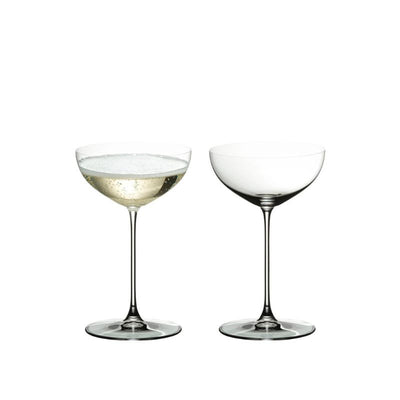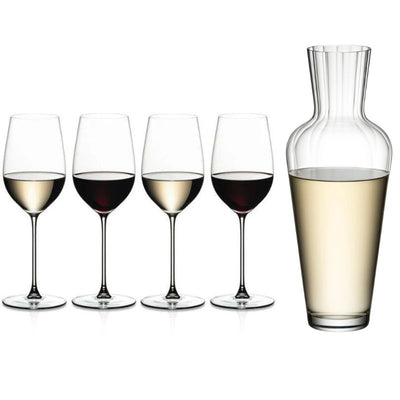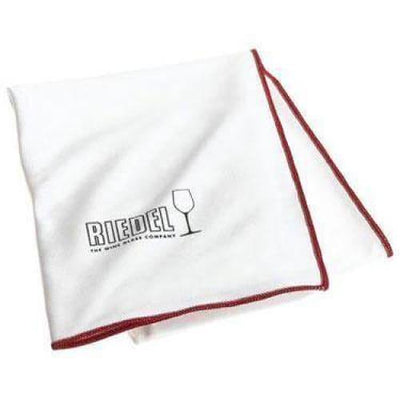Climate Change and the Future of Wine: A Comprehensive Update for 2025

Climate Change and the Future of Wine: A Comprehensive Update for 2025
Unless you've been cut off from civilisation for the past few years, you can't help but be aware of, and quite probably concerned about, climate change and the fact that it’s reshaping the wine world before our very eyes.
The global warming we're experiencing, caused largely by human activity and greenhouse gas emissions, continues to have an irreversible impact on our ecosystems. Since the vine is part of these vulnerable ecosystems, the consequences are disrupting wine and winemaking in ways we're only beginning to understand. Production, taste, and even the location of wine-growing regions themselves are changing more rapidly than anyone predicted just a few years ago.
The Great Migration North (and South)
If you look at a map of the classic wine regions of the world, you'll notice they all have something in common: latitude. In each hemisphere, the vast majority of quality wines are produced between the 30- and 50-degree parallels. This isn't coincidence. Vitis vinifera vines need very specific growing conditions to thrive, including freedom from extreme climate conditions. If exposed to too much heat or cold, the vines shut down and stop producing fruit.

But here's what's changed dramatically since 2021: the suitable surface area of traditional wine-producing regions is expected to decline by 20–70% by the end of the century, depending on the severity of the warming scenario. Simultaneously, new wine regions are expected to expand northward, notably along the Atlantic sector, resulting in a net increase of climatically suitable areas in Europe by up to 60%.
The effects of climate change are causing these regions to shift away from the equator faster than was anticipated. They're moving further north in the Northern Hemisphere and further south in the Southern Hemisphere, where climates that were previously too cold to grow wine grapes are becoming better suited for viticulture.
This doesn't mean your favourite wine regions will disappear overnight, but it does mean winemakers in those areas need to make changes to adapt to rising global temperatures and other effects of climate change.
What's Actually Happening Right Now
Eight of the ten warmest years on record have occurred in the last decade, and the pace is accelerating. Across the board, the entire growing cycle is happening earlier. Budding, flowering, fruit-set, veraison (the stage in the growing process when the grape begins to soften and change colour on the vine, indicating the onset of ripening), and harvest are all taking place, on average ten days to two weeks sooner than they used to.
But it's not just about warmer summers. Because winters are significantly milder, vines are often coming out of dormancy far earlier than they used to, making them more vulnerable to frost. France has been particularly affected by this phenomenon, with mild winters followed by sudden cold snaps in early spring that devastate young growth.
Wine grapes remain susceptible to changes in climate, growing in narrow geographical and climatic ranges where temperatures during the growing season average 12-22°C. This means global warming continues to impact the yield and quality of established wine varieties that were selected to suit local climates at planting time.
Climate change has also increased severe weather events. Wildfires in regions like southern France, Australia, and California have become more frequent and intense. The 2020 fires in California damaged at least a dozen wineries, while more recent fires in Provence affected 73 wineries and 5 cooperatives. But it's not just the flames - rolling clouds of smoke can cover vineyards and ruin wines produced from vines that were never in physical danger from the flames.
Water scarcity is becoming critical. Climatologists in the US estimate that nearly 80 percent of the country is in some level of drought. Wine is a thirsty industry - irrigating a 10-hectare vineyard for three hours takes tens of thousands of litres of water.
Fighting Back: How Winemakers Are Adapting
However, it's not all doom and gloom. Winemakers are fighting back in remarkable ways.
The Grape Varieties Are on the Move
Whilst wine-growing regions that are already hot - Italy, Spain, and Australia - face the biggest challenges, cooler regions like Germany, New Zealand, and the U.S. Pacific Northwest are becoming suitable for warmer varieties like merlot and grenache. Meanwhile, varieties that prefer cooler temperatures, such as pinot noir, are expanding northward into regions not previously suitable for growing grapes.
Seeking Higher Ground
Vineyards are being planted at altitudes once considered inhospitable. In response to climate change, Familia Torres has planted vineyards at 3,000 to 4,000 feet in the Pyrenees foothills - something that would have been impossible 25 years ago.
At higher elevations, peak temperatures aren't necessarily cooler, but intense heat lasts for shorter periods, and nighttime temperatures are colder. This increased diurnal shift helps grapes ripen more evenly over longer periods.
Even in Burgundy's heart, they're seeing effects. The Hautes-Côtes region, situated 1,200 to 1,300 feet up, was historically marginal because grapes ripened a week or two behind those at lower elevations. Now, grapes are ripening earlier and more consistently, producing better wines.
Looking The Other Way
For centuries, a formula governed vineyard placement in the Northern Hemisphere: hillsides with suitable soils facing south or southeast for maximum sun and warmth. As areas in the Southern Hemisphere were planted, north-facing slopes were most prized.
Climate change has flipped this logic. The problem is no longer ripening grapes fully but preventing overripening. In Australia's Yarra Valley, growers are rethinking conventional wisdom about north-facing vineyards. Mac Forbes planted chenin blanc, pinot noir, and nebbiolo on a south-facing slope, where they benefit from a relatively cooler climate.
In Portugal's Douro Valley, south-facing vineyards at lower altitudes are still prized for port, which requires very ripe grapes. But for fresh, unfortified reds and whites with growing worldwide demand, winemakers are seeking north-facing vineyards and higher elevations.
The Remarkable Rise of English Wine
England perfectly exemplifies this new reality. Thirty years ago, nobody had heard of English sparkling wine. Over the last 20 years, climate change has contributed to growth in UK vineyard area - with more than 800 vineyards now - and award-winning wine production.
As the climate has warmed, a world-class sparkling wine industry has developed, with new vineyards planted at a dizzying pace, primarily along the south coast. From Kent through Sussex, Hampshire, Dorset, and as far west as Cornwall, fine sparkling wines are being made using the same method as Champagne, but with their own character.
Many of the best vineyards are planted in chalky white soils geologically identical to Champagne's most prized soils. Those soils were always in England, but until recently, the climate was too cold. Now, Champagne companies like Taittinger and Pommery have invested in English vineyards, hedging their bets as Champagne's once-marginal climate has warmed.
Recent research shows how the climate of a larger area of England and Wales is projected to become suitable for reliably growing sparkling wine grape varieties, and how the potential for high quality still wine production is rapidly emerging. The study found that higher growing season temperatures over the next 20 years will further increase the UK's wine growing potential, allowing for the cultivation of grapes varieties such as Merlot, Sauvignon Blanc, Riesling and Semillon.
Nearly 900 vineyards and close to 200 wineries are now operating in England, with over 10,000 acres of land under vine, an increase of 70 percent over just five years. The industry aims to quadruple annual production within two decades.
And it's not only England. Vineyards are now planted in Belgium, Denmark, Norway, and Sweden - some with hybrid grape varieties bred for colder weather, others with vinifera grapes. Grapes for fine wines are being grown in northern Germany and Canadian provinces of Ontario and British Columbia.
In the Southern Hemisphere, growers are pushing south, deep into Patagonia in Argentina and Chile.
The Carbon Footprint Challenge
What's become increasingly clear since 2021 is wine's substantial environmental impact. According to a 2022 review of wine industry carbon emission studies, packaging is regularly cited as the top contributor to greenhouse gas emissions, often producing more emissions than grape cultivation and winemaking combined.
The numbers are staggering. One 500ml bottle of beer takes 148 litres of water to produce, but a single 750ml bottle of wine requires 660 litres! Alcohol is a thirsty product.
The Glass Problem
Glass bottles have long been argued over as containers. A carbon emissions audit by Jackson Family Wines found glass bottles comprised 18% of their total carbon footprint, with other packaging bringing the total to 24%. Glass production involves a lot of heat: The material must reach around 1,700 degrees Celsius before it's pliable enough to mould into a bottle.
Container ships and lorries carrying wine from New Zealand to Britain make an astonishing 17,000-mile journey, producing 2.1kg of CO2 per 6-bottle case. For wine from Argentina, each case generates 1.5kg of CO2 emissions, and Australia produces 2kg per case.
Over a year, the UK imports 220 million litres of wine from Australia alone, generating 96,000 tonnes of CO2 - roughly equivalent to heating 35,000 UK homes annually. New Zealand wines add another 19,000 tonnes of CO2.

Innovative Solutions
The good news is that innovation is accelerating. An international coalition, the Sustainable Wine Roundtable, has launched a Bottle Weight Accord supported by key large-scale retailers worldwide, prioritising reducing average still wine bottle weight from 550 grams to 420 grams by end of 2026.
But some are going much further. Companies like Garçon Wines (now rebranded as Packamama) have developed flat wine bottles that are 87 percent lighter than traditional glass wine bottles and save money - and reduce emissions - across the supply chain because shippers can get so many more bottles into a compact space.

Frugal Bottles are made from 94% recycled paperboard with a food-grade pouch. They weigh just 83g before filled and are five times lighter than glass. This means it has a carbon footprint six times lower than glass bottles. California's Monterey Wine Company has become the first U.S. filler for these paper bottles.
These innovative bottles aren't widely available yet, but you can find them at Co-op, Ocado, and through online retailers, plus companies like Moonpig and Funky Pigeon (because they fit through your letterbox!).
As Andrew Jefford from Decanter Magazine said: "The existing carbon footprint of wine is unsustainable... No single action would make more difference in the wine world than the swift adoption of bottles like this for every wine designed to be drunk on purchase (most wine, in other words)."
Beyond Bottles
Some producers focus on carbon reduction through production processes. Methods vary greatly: some breweries, wineries, and distilleries achieve carbon neutrality by increasing renewable energy use like wind power, or through technology advances such as four-column fractional distillation stills instead of traditional pot stills.
Others focus on being "carbon positive" through tree planting - sometimes one tree per bottle. By using locally grown timber for distillation and replanting afterwards, distillers effectively reduce their carbon footprints.
 |
There's even Tres Hombres rum, made in the Caribbean but shipped to Europe on a 32m traditional sailing ship! The brigantine was built in 1943 and bought by three friends, hence the name, in 2007. She's been sailing a transatlantic engine-less freight service ever since, carrying organic and traditionally crafted goods including cocoa beans, chocolate, coffee, tea, wine, and rum. While this couldn't work for all cargo (capacity is only 40 tonnes), Fairtransport shows it's feasible for smaller companies committed to reducing their carbon footprint. |
What Can We Do as Drinkers?
The message from environmentalists is clear: reduce "air miles" and buy locally. This spotlight is now on wine. Although the UK imports three times as much wine from France and Italy as from New Zealand, shipping from the Southern Hemisphere generates far more CO2 than buying from closer countries.
It's simple: buy wine produced as close to home as possible. This doesn't mean exclusively buying from Kent, Sussex, and Surrey. When you're in the UK, France, Italy, and Spain are right on your doorstep.
Shipping a 6-bottle case from Italy or France generates almost a quarter of the CO2 of the same case from New Zealand or Australia. When the supermarket entices you with attractive New Zealand Pinot Noir, remember that shipping that bottle causes four times more planetary harm than the Italian Chianti sitting next to it.
Looking Ahead: The Future of Wine
Recent studies paint a stark picture. About 90% of traditional wine regions in coastal and lowland regions of Spain, Italy, Greece and southern California could be at risk of disappearing by the end of the century because of excessive drought and more frequent heatwaves with climate change.
Yet opportunity exists alongside challenge. Potential emerging wine regions in Africa include the highlands of Kenya and Ethiopia, where the wine industry is at the early stage of development. In Asia, emerging regions with potential include the northeastern Black Sea coasts, eastern Anotolia and Pamir-Himalayan Mountains.
The wine world could look very different in one or two generations. Temperature rises of up to 3°C by 2050 and 5°C by 2100 could effectively rewrite regional reputations and varietal preferences.
As consumers become more climate-conscious, demand for carbon-neutral drinks will rise, forcing producers to innovate to compete. Recent research by Lux Research found that more than 35 million Americans are interested in finding more sustainable wine packaging.
Final Thoughts
Researching this updated article has left me more optimistic than I was in 2021. There are numerous intelligent, innovative initiatives that bode well for the future. From English vineyards thriving in their new climate to revolutionary packaging solutions, from high-altitude plantings to wind-powered sailing ships, the wine world is adapting with remarkable creativity.
We're witnessing the most dramatic transformation in wine production since phylloxera devastated European vineyards in the 19th century. But unlike that crisis, this one offers opportunities alongside challenges. New regions are emerging, new technologies are developing, and new approaches to sustainability are taking root.
The proof of the pudding will be in the drinking, and we must all do our bit by being more conscious of our choices' environmental impact - from holiday travel to car purchases to sipping a nice glass of wine on Saturday evening.
Climate change is rewriting wine's map, but human ingenuity is writing the response. The next chapter promises to be fascinating.
Right, I'm off to get a bottle of wine. Probably English sparkling - and definitely not from New Zealand.
Cheers to a sustainable future!











Leave a comment